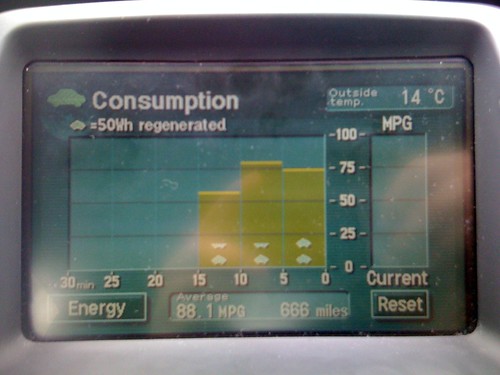Former CMO of Tesla Motors Darryl Siry, (now a Senior Analysist of Cleanteach at Peppercom) has called for auto makers to be more clear about the abilities and range of their electric and plug-in vehicles. It’s a subject I‘ve touched on in the past, but felt it worth revisiting considering the excellent article.
It’s a common problem with all EVs on the market today. Like their petrol-powered counterparts, sales teams just can’t help themselves when it comes to providing optimistic range figures for their vehicles. It’s common practice, but as Darryl eloquently argues, it could jeopardize the very heart of the EV industry before it’s fully got off the ground.
The public don’t like being made to feel that they are being lied to. And while, on a purely technical level, no car company is lying when it claims a car can do 56 mpg on it’s urban cycle, or that the range of that funky new EV is a salivating 200 miles. But at the same time the auto industry doesn’t like to tell you the full story.

More after the jump.
For such a technically advanced civilization, we do tend to be unusually vague when it comes to performance, range and economy figures for new cars. What other industry would get away with over-quoting in such a blatant way? I can’t think of that many. In fact, the closest analogy I can come up with is in the form of the ISP who claims a download speed of 30 Mb is available in your area, tempting you to upgrade; Only of course, to discover that you can’t get anything faster than 15Mb downloads – half the speed they advertised. Of course, they get around it by saying “Up- To”. In other industries that would not be acceptable.
I would rather an ISP tell me that the connection I have to the Internet will run between speed x and speed y, rather than the ‘up to’ malarkey. I’m no lawyer, but using an ‘up to’ statement means that it’s okay for the ISP to only provide you with a 56kb speed, even if they’re charging you for that 30 Mb connection.
But I digress. Let’s go back to the range conundrum.
Darryl’s proposal is that electric vehicle sales literature carries a set of three conditions which have to be met in order to make the magic “maximum range” happen. That’s great – but even that could scare off future customers. Tell a customer that their new vehicle will only give them that maximum range of 200 miles when the batteries are relatively new, have been through x charge cycles and the vehicle is driven in a very specific way will probably cause them to run off, screaming. Considering many motorists can’t even change a tire without help an optimistic mileage figure, accompanied by a set of clauses and qualifying statements, would mean little to nothing to many drivers.
I think instead it would be better to publish a car’s fuel economy (or range on a charge) using a range. For example, rather than saying that new EV can do 200 miles on a charge (Yes, we know it’s a theoretical maximum, but they aren’t treated as such) why not say that it will do ‘between 150 and 200 miles’. If you really feel the need, the following statement would suffix it: ‘..depending on driving style, weather and battery health’.
When I buy a computer or any other form of consumer hardware, I have a set of expectations that accompanies that purchase. Thanks to (fairly) accurate descriptions from the manufacturer I know what I can expect the computer to do. If I find out that it’s actually capable of more than I initially thought (quite a common pleasant surprise these days thanks to accurate product descriptions) then I feel like I’ve got something good. I’ve got a bargain.
In a similar way, if I purchased an EV with a list range of 50 miles only to regularly get over 55 miles range per charge then I’d feel like the vehicle exceeded my expectations. If it only did 45 miles I’d feel cheated. A cheated customer can do much more damage than 100 satisfied ones could ever counteract.
The idea that your product does more than advertised is one that EV companies should be looking at. I’m not sure that there is yet a hard and fast answer, but it’s one that we need to involve auto legislation in. Make the road efficiency and distance standards more realistic for average drivers, not engineers, elite hyper milers or robotic feet on the rolling road.
Sign me up to the Campaign for Real Mileage and Range. It is, at the end of the day, only a wish to get realistic, achievable and honest figures for fuel consumption and range. But in order for it to take off, the EPA and other Auto standards agencies have to step up to the plate and learn how the regular person drives – and how that impacts on fuel economy and range calculations.